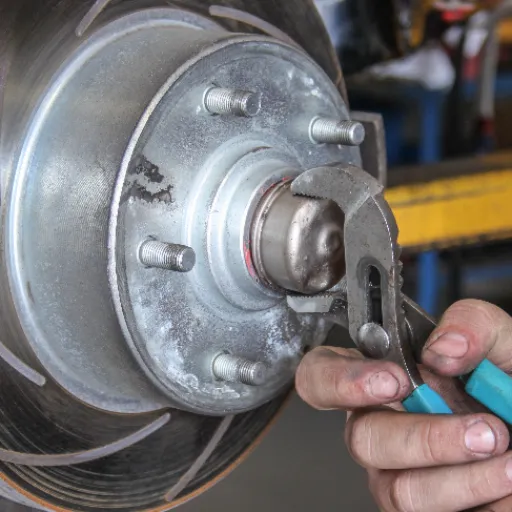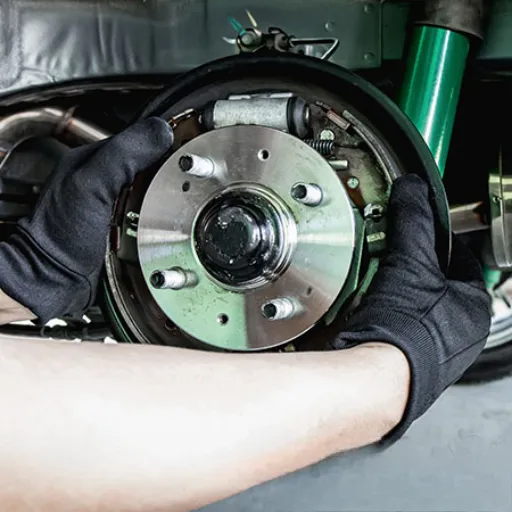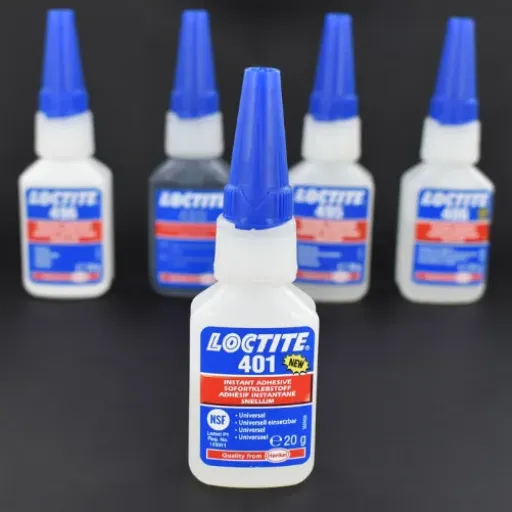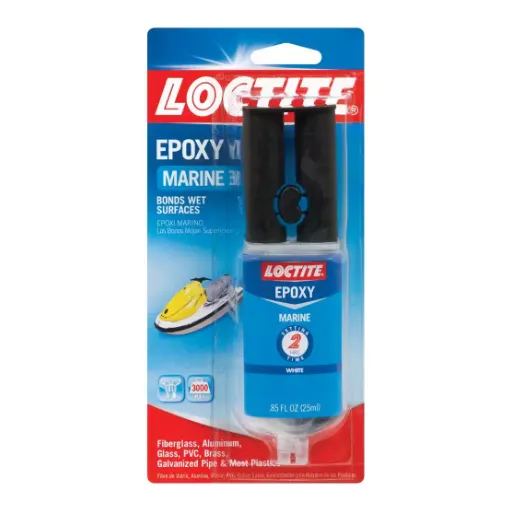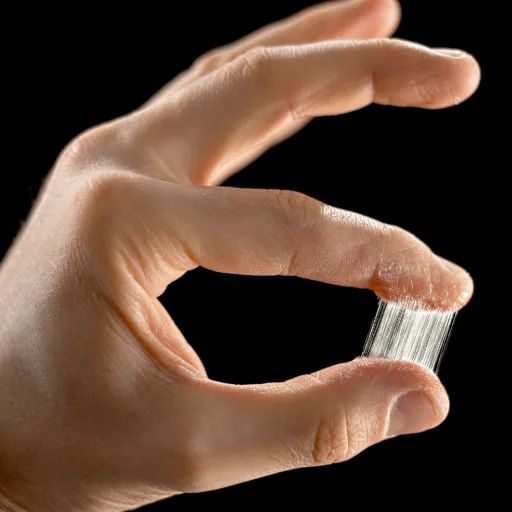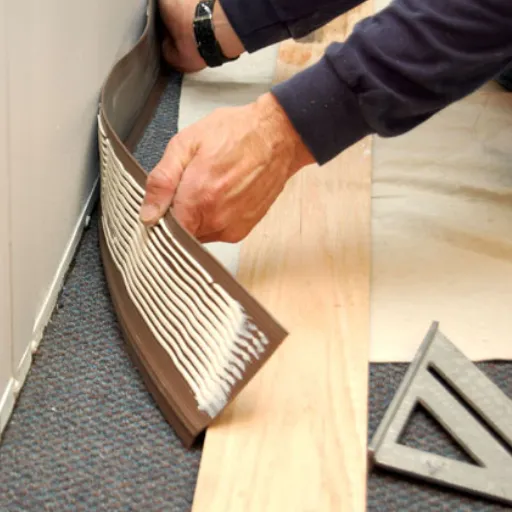Choosing the right adhesive for crafting or repairing synthetic fabrics can make a significant difference. Pools of challenges might arise because synthetic fabrics generally have smooth surfaces and chemical compositions, as opposed to natural materials. Whether you are a DIY enthusiast, a professional designer, or simply looking to sew a tear in your favorite shirt, knowing which fabric glues will work best for this type of work is crucial. This guide will walk you through the essential considerations when selecting glue for synthetic fabrics, introducing the best glues on the market, and offering practical tips for achieving substantial and lasting bonds. Discover how the right adhesive can elevate your projects and make repairs a breeze!
Understanding Synthetic Fabrics
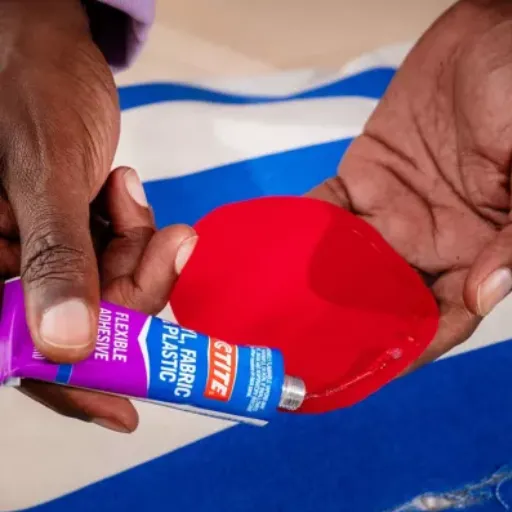
Synthetic fabrics are man-made materials of chemical origin, mostly coming from petroleum products. Common types are polyester, nylon, acrylic, and spandex. These fabrics are durable, wrinkle-resistant, and valuable in countless applications. However, because they have smooth, non-porous surfaces, it is challenging to bond synthetic fabrics together. They usually require adhesives formulated especially for that purpose. It is essential that you know your particular synthetic fabric to produce good results that will adhere well.
Unique Properties of Synthetic Fabrics
Synthetic fabrics have a list of peculiar properties, each of which may be harnessed for a modern application. First, they are highly durable and therefore do not lose much to wear and tear, making them a superb alternative for heavy sportswear or work clothes. In addition, certain synthetic fabrics, such as polyester and nylon, are water-repellent to some extent or dry rapidly, making them suitable for outdoor activities and sportswear. Aside from this, these fabrics do not shrink, stretch, or wrinkle, so they maintain their shape for an extended period. Most synthetic materials are designed to be ultra-lightweight, which is excellent for wearer comfort, such as breathability and moisture-wicking. Finally, synthetic fibres can be created to meet specific needs, such as flame resistance, UV protection, or antibacterial properties, thereby showcasing another impressive aspect of their versatility and practical value.
Challenges in Bonding Synthetic Fabrics
Bonding synthetic fabrics comes with a host of challenges, all stemming from the characteristics of the materials. Many synthetic fibers, such as polyester, nylon, and acrylic, bear very smooth and low-porosity surfaces that resist adherence. Moreover, since these fabrics are highly chemically resistant, they do not commonly react with most adhesives. Thermal sensitivity is another issue with some synthetic fabrics: excessive heat can lead to melting or warping during the bonding stage. Lastly, the presence of several additives, such as dyes or finishes, could keep these from working well with the adhesives. All these factors necessitate the careful consideration of specialized adhesives, treatments, or bonding technologies tailored to each fabric and its specific application.
Why Choosing the Right Glue is Crucial
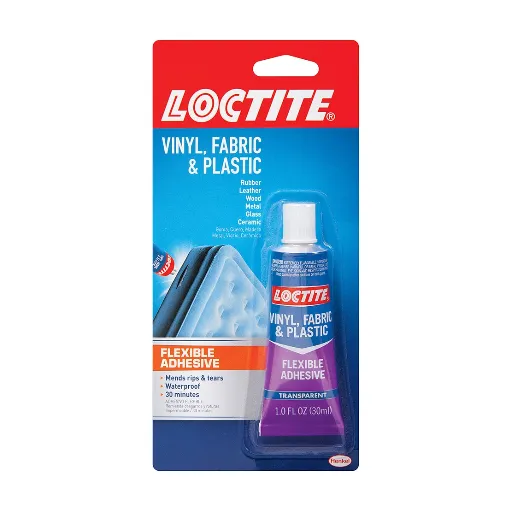
A crucial consideration is choosing the adhesive that renders its application durable, effective, and safe. If one uses an adhesive ill-suited for the job, it may cause weak adherence, damage to the materials, or total failure of the project. While fabric and plastic, for instance, each have properties of their own, the same is true for wood; all, on the other hand, require particular adhesives that can perform the task of proper adhesion in the interest of being glued. Choosing the right adhesive will allow for optimum bonding, worthy of lasting results, whereas the wrong adhesive spells degradation, or worse, a lack of adhesion.
Impact of Wrong Adhesive on Synthetic Fabrics
Some issues may arise when the incorrect adhesive is applied to synthetic fabrics, compromising the material’s strength and appearance. Synthetic fabrics, such as polyester, nylon, and spandex, typically have smooth and non-porous surfaces, which means they do not tend to absorb adhesives as readily as natural fibers do. An incompatible adhesive may create a weak bond that can be peeled or cracked under stress. In other cases, an incorrect adhesive can chemically react with synthetic materials, causing discoloration, melting, or other structural damage. For example, adhesives containing strong solvents can cause irreversible damage by dissolving synthetic fibers. To prevent these problems, it is recommended to use adhesives specifically designed for synthetic fabrics to secure the bond without damaging the material.
Key Factors for Selecting Fabric Adhesive
The categories below are crucial when selecting the best fabric glue for your specific application, for ensuring maximum adherence:
- Material Compatibility – Different fabric types require adhesives explicitly formulated for their properties. For instance, synthetic fabrics need adhesives that do not contain harsh solvents that could cause damage. Always verify that the adhesive is suitable for the fabric in question.
- Flexibility and Strength – Adhesives should provide a strong yet flexible bond to accommodate the natural movement of fabric. A rigid adhesive may crack or peel over time, especially in garments or frequently used items.
- Water Resistance – If the fabric will be exposed to moisture or need repeated washing, it’s vital to select a water-resistant fabric adhesive to maintain a durable bond over time.
- Drying Time – Rapid-setting adhesives are ideal for quick projects, whereas slower-drying variants allow for repositioning and adjustments. Consider the project timeline when selecting an adhesive.
- Ease of Use and Finish – Select adhesives that are easy to apply and dry clear for a seamless, invisible finish. This is particularly crucial for decorative projects where aesthetics matter.
Popular Adhesives for Synthetic Fabrics
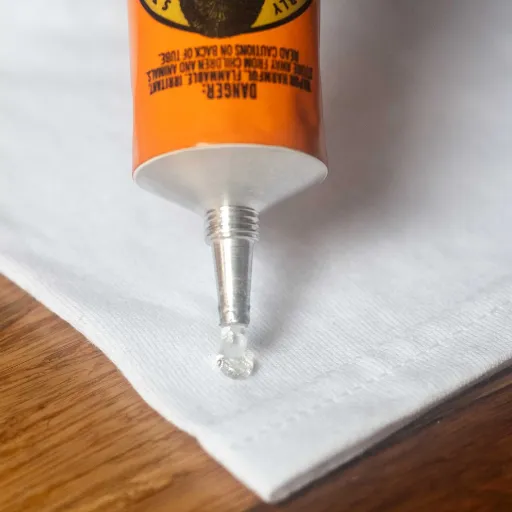
Fabric Glue
Fabric glue is specifically designed for textiles, providing a strong bond while remaining flexible after drying. It works perfectly when sewing is not an option for attaching synthetic fabrics.
Hot Glue
Great for quick fixes on light synthetic materials. Use a low-temperature glue gun to keep the fabric safe.
Epoxy Adhesive
For heavier or more rigid synthetic fabrics, provide a durable and long-lasting adhesion. Ensure the area is well-ventilated while working.
Spray Adhesive
The best choice for covering larger areas evenly, spray adhesives are often used in crafts and for the upholstery of synthetic fabrics.
Polyurethane Adhesive
Popular for its versatility and strength, this adhesive is water-resistant and is commonly used for outdoor applications.
Top Product Recommendations
Loctite Fabric Glue
Loctite Fabric Glue is a super-strong adhesive designed to quickly and securely bond a wide range of fabrics. It is flexible and washable, making it suitable for clothing repairs, attaching decorations, or creating home decor items. The glue dries clear, providing an immaculate finish that doesn’t affect the fabric’s appearance. In fact, this glue is highly resistant to washing and dry cleaning, which means a strong bond will be forged over time. Whether it’s a minor fabric repair job or a detailed fabric project, Loctite Fabric Glue is the reliable choice.
Gorilla Fabric Glue
A renowned fast-setting glue, Gorilla Fabric Glue is formulated as an excellent, strong adhesive for fabric projects and work. With fast-setting qualities, the glue does not allow for any manipulation to sew it. It can either be used decoratively or functionally. This glue forms a flexible bond that can withstand repeated washing and lasts for an extended period. Therefore, the glue works very well in patching tears, affixing trims, and providing other quick fixes. Its translucent nature lets it blend seamlessly with any fabric type. The glue provides a durable solution, whether you need quick fixes or intricate crafts.
Application Tips for Best Results
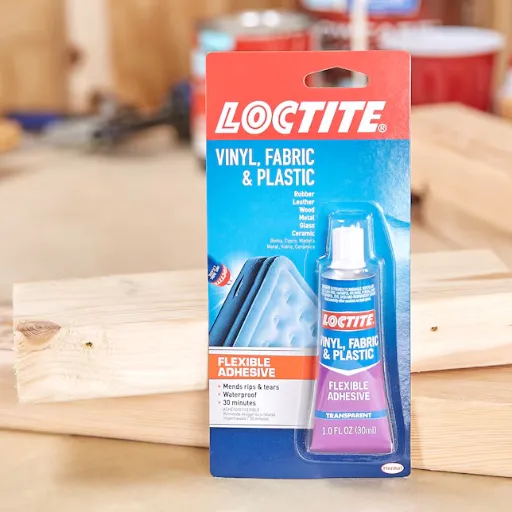
- Ensure the fabric surface is clean and dry before applying glue.
- Apply a thin, even layer of glue straight onto one surface.
- Press both materials together firmly and allow the full setting time of 24 hours or more for optimal bond strength.
- Do not subject the fabric to washing or heavy use until the glue is fully cured.
- The fabric glue should remain stored in a dry, cool place with its cap tightly sealed; otherwise, it would lose its efficacy.
Common Mistakes to Avoid
Applying Too Much Glue
When excessive glue is used, it tends to bleed through the fabric, resulting in unwanted stains or uneven bonding. Usually, a thin, even layer is all that is required.
Skipping Surface Preparation
Neglecting to clean and dry the fabric surface before applying glue may result in decreased adhesion. Dust, oils, or moisture will become an obstruction.
Not Allowing Proper Drying Time
Using the fabric before the glue has set will weaken the bond by rushing its curing process. One must always observe the warp time.
Incorrect Storage of Glue
Leaving the glue uncapped or storing it in non-ideal conditions will cause it to dry out or become significantly less effective over time.
Using the Wrong Type of Fabric Glue
Not all fabric glues are suitable for all materials. Ensure you are using a material that is suitable for your fabric type.
Tips for a Professional Finish
For finesse and smooth finishing on your fabric glue projects, do take heed of the tips below:
🎯 Prepare Your Workspace
Work on a clean, flat surface with ample light to prevent unwanted wrinkles or uneven glue application from marred your work.
🧪 Test on Scrap Material
Test the glue on spare fabric to assess compatibility, drying time, and finish.
🛠️ Use the Right Tools
For fine glue applications, especially in intricate work, use tools such as toothpicks, brushes, or applicator tips.
⚖️ Apply Even Pressure
After gluing, press both fabrics together evenly using a flat object, such as a book, to allow the bond to set evenly.
✂️ Trim Excess Glue
For a neat look, once the glue has set, carefully trim any overflow with a craft knife or scissors.
📋 Follow Manufacturer’s Instructions
Always follow the manufacturer’s guidelines for applying glue, drying time, and precautions for handling.
Expert Recommendations
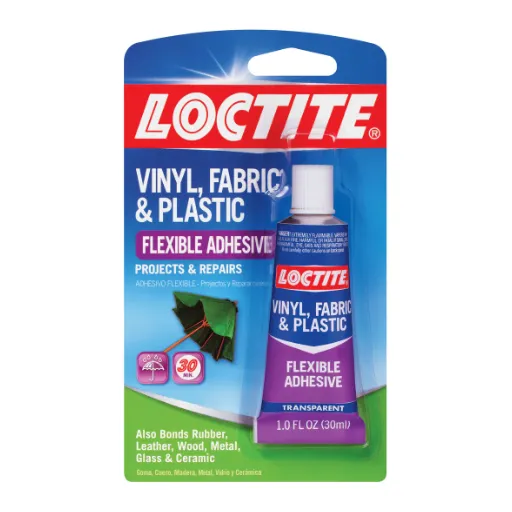
- Choose the Right Glue: Depending on the project type, use fabric glue. When gluing heavy fabrics, use a stronger adhesive. If you are reacting to lighter fabrics, use a delicate formula.
- Test on Scrap Material: Before applying glue to your main project, test it on a small piece of scrap fabric to ensure compatibility and yield the desired results.
- Work in a Well-Ventilated Area: Exposure to heavy fumes is harmful; therefore, always use glues in well-ventilated rooms.
- Allow Sufficient Drying Time: Do not rush the process; the glue requires its full cure time, as stated in the product instructions, for maximum bond strength.
- Store Properly After Use: Keep the glue tightly capped and store it in a cool, dry place to preserve its quality.
Recommendations for Heavy-Duty vs. Light Repairs
🔧 Heavy-Duty Repairs
Heavy repair jobs, such as upholstery or outdoor gear-related projects, should utilize industrial-strength fabric adhesives or sewn-in reinforced stitch patterns to provide the most significant level of durability against wear and tear. Should the fabric be exposed to the weather, all products used must be weather-resistant.
🪶 Light Repairs
Light repairs, on the other hand, can be easily handled with the application of lightweight adhesives or a simple hand stitch for small rips or to embellish the garments simply. A less time-consuming approach, it is ideal when considering a repair that will not require much stress. Always consider fabric type and repair requirements before determining the best materials and methods for the job.
Maintaining Glued Synthetic Fabrics
Maintaining synthetic fabrics in good condition requires periodic checks to ensure the bond remains intact. I keep the fabric clean; in the process, it is protected from exposure to extreme temperatures or harsh chemicals that would otherwise diminish the glue’s bonding power. When peeling or weakening appears, or at least threatens to appear, I apply additional adhesive before it does, to extend the life of the repair.
Reference Sources
Here are five professional and authoritative sources you can employ to verify the accuracy of your article on “glue for synthetic fabric.” These sources come from academic and research-oriented websites:
- “Mechanical properties of adhesive bonds reinforced with biological fabric”
This article on Taylor & Francis Online is an analysis of the mechanical properties of adhesive bonds and their applications to fabric reinforcement. - “Adhesion to textile fibres and fabrics”
This ScienceDirect article outlines the challenges and advancements in achieving successful adhesion to textile fibers, whether synthetic or natural. - “Polyester adhesives in nonwovens and other textile applications”
This article in the Journal of Industrial Textiles looks into the application of polyester adhesives in textile applications, primarily those involving synthetic fabrics. - “Evaluating the use of adhesives in textile conservation: Part I: an overview and surveys of current use”
From Taylor & Francis Online, this article offers various insights into the discussion on the practical and academic use of adhesives in textile conservation. - “Experimental analysis of adhesively bonded joints in synthetic-and natural fibre-reinforced polymer composites”
Published in the Journal of Composite Materials, this research focuses on the bonding properties of adhesives in synthetic and natural fiber-reinforced composites.
Frequently Asked Questions (FAQs)
❓ Common Questions About Fabric Glue
What is the best glue for synthetic fabric?
The best glue for synthetic fabric is often a permanent fabric glue explicitly designed for the material you are working with. For instance, Aleene’s Fabric Fusion or Fabri-Tac are popular choices for their strong, lasting bonds. Always check the label to ensure compatibility with your specific synthetic fabric.
Can I use fabric glue on delicate fabrics?
Yes, you can use fabric glue on delicate fabrics, such as silk or lightweight materials. However, it’s best to choose a flexible adhesive that is designed for such fabrics to avoid damage. Always perform a patch test before fully applying the glue.
Is waterproof fabric glue available?
Yes, waterproof fabric glues are available that can provide a permanent bond suitable for outdoor gear or items exposed to moisture. Look for products labeled explicitly as waterproof to ensure they can withstand washing and outdoor conditions.
How do I perform quick repairs on denim using fabric glue?
For quick repairs on denim, use a strong fabric glue, such as E6000, or a temporary fabric glue for short-term fixes. Apply the glue to the rips and tears, press the fabric together, and allow it to dry completely for a secure hold. This method is effective for mending and can save time compared to traditional needle-and-thread methods.
Can I use fabric glue for attaching embellishments?
Absolutely! Fabric glue is an excellent choice for attaching embellishments to fabric. It provides a strong bond and can hold items like patches, beads, or sequins securely in place. Ensure you select a permanent adhesive for long-lasting results.
What factors should I consider when selecting a fabric glue?
When selecting a fabric glue, consider the type of fabric you are working with, the required durability, and whether the glue needs to be waterproof. Additionally, check if the glue is washable and suitable for permanent repairs, especially for items that will be frequently used.
Are fabric glues washable?
Many fabric glues are designed to be washable, but it’s essential to check the label to confirm. Products like Aleene’s Fabric Fusion are known for their washable properties, making them ideal for items that will be washed in a laundry machine.
What is the difference between permanent and temporary fabric glue?
Permanently adhesive fabric glues provide a long-lasting bond that is intended to withstand washing and regular use. In contrast, temporary fabric glues offer a short-term bond suitable for quick fixes or temporary attachments. Select the appropriate type based on your project’s needs.
Can I repair plastic with fabric glue?
Some fabric glues, such as E6000, are versatile enough for both plastic repair and fabric bonding. However, it’s essential to ensure that the glue is suitable for the type of plastic you are working with. Always check the label to make sure it’s designed for the materials in your project.







